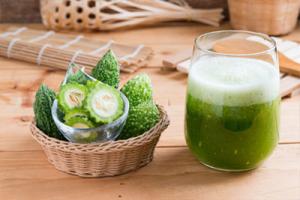Date Posted
Dear Nutrition Enthusiast,
RESEARCH UPDATE: ON THE CLINICAL FRONT
Oxidative Stress and Antioxidant Status in High-Risk Prostate Cancer Subjects

Chronic inflammation as a result of oxidative stress, reactive oxygen species production, and changes in antioxidant enzyme activity are linked to the pathophysiology of prostate cancer. Shukla and colleagues assessed DNA damage and antioxidant enzyme levels in high-risk prostate cancer subjects and age-matched healthy subjects (52-84 years old). Serum PSA was significantly higher in the high-risk group and there was a significant positive association between elevated PSA levels and 8-OHdG, an oxidative DNA damage biomarker, in the high risk group. The activity of the antioxidant enzymes glutathione S-transferase (GST) and reduced glutathione (GSH) were negatively correlated to 8-OHdG and significantly higher in the healthy controls. These findings suggest that the depletion of the antioxidant defense system and increased levels of oxidative damage may play a central role in prostate cancer. Further studies are needed to ascertain the precise role of pro-oxidant-antioxidant status as diagnostic or prognostic markers in the early stages of prostate cancer.
RESEARCH UPDATE: WHAT’S NEW IN BASIC SCIENCE
Announcements
The NCI Cancer Prevention Fellowship Program is now accepting applications. The NCI Cancer Prevention Fellowship Program is a multidisciplinary postdoctoral program that trains future leaders in the field of cancer prevention and control. Application period is from May 1 – August 16, 2021.
Past Stars in Nutrition and Cancer lectures are available for viewing.
NCI and NIH continue to monitor the emergency and will continue to issue guide notices and update FAQs and additional resources. All information can be found on the Coronavirus Disease 2019 (COVID-19): Information for NIH Applicants and Recipients of NIH Funding page.
Upcoming Virtual Events
May 17-21, 2021
Week 2: AACR Annual 2021 Virtual Meeting
American Association for Cancer Research
June 7-10, 2021
ASN Nutrition Live On-Line 2021 Conference
American Society for Nutrition
June 21-22, 2021
Heterogeneity in Obesity: Implications for Cancer and Related Obesity-Associated Outcomes
2nd Annual Interdisciplinary Nutrition Sciences Symposium
July 8-10, 2021
Translating Energy Balance From Bench to Communities: Application of Parallel Animal-Human Studies
Mutagenicity of a Potential Heterocyclic Aromatic Amine Carcinogen Human Cells

One of the most abundant heterocyclic aromatic amines (HAAs) and possible human carcinogens formed in cooked red meat and fish is 2-amino-1-methyl-6-phenylimidazo [4,5-Ƅ]pyridine (PhIP). In the liver, PhIP is converted to 2-hydroxyamino-1-methyl-6-phenylimidazo [4,5- Ƅ]pyridine (N-OH-PhIP). Humans bioactivate PhIP in vivo to form premutagenic DNA adducts. In a recent study, Hölzl-Armstrong and colleagues assessed the mutagenicity of N–OHPhIP using primary embryo fibroblasts (HUFs) isolated from the Hupki mouse. The authors’ hypothesized that N–OH-PhIP leaves a characteristic mutation fingerprint in the whole genome and in the tumor suppressor gene TP53 (a gene that is mutated in about half of human cancers) of immortalized HUFs. The HUF mutation fingerprint can be linked to human tumour data using human mutation databases. The authors found that N–OH-PhIP exposed HUFs induced a TP53 mutation pattern and mutational signature in the whole genome characterized by G > T/C > A transversions. This is in agreement with the dG-C8-adduct formed by N–OH-PhIP. These results suggest mutations in the TP53 gene in exposed HUFs could be related to those found in human tumors.
Altered Susceptibilities to Polycyclic Aromatic Hydrocarbon-induced Pulmonary Carcinogenesis

Polycyclic aromatic hydrocarbons (PAHs), found naturally in coal, crude oil, and gasoline, are produced when coal, oil, gas, wood, garbage and tobacco are burned, as well as when meat and other foods are cooked at high temperatures. Many PAHs are carcinogens and are known to increase the risk of lung cancer. In the liver and lung, Cytochrome P450 (CYP) 1A enzymes metabolize PAHs into reactive metabolites that induce mutagenic DNA adducts, which can lead to cancer. Gastelum and colleagues investigated the individual roles of each CPY1A enzyme in the bioactivation of PAHs. They found mice lacking the Cyp1a1 gene were less susceptible to PAH-induced pulmonary carcinogenesis, whereas mice lacking the Cyp1a2 gene were more susceptible. Further, lung adenocarcinoma patients with high levels of CYP1A2 expression survived longer than patients with low/medium expression. These results will help inform future studies examining potential prophylactic and therapeutic interventions for PAH-induced lung cancer in humans.
SPOTLIGHT INVESTIGATOR: MING YOU

As of May, 2021, Ming You, M.D., Ph.D. became the Daniel Lehane Endowed Chair in Cancer Research, Director of Center for Cancer Prevention, Professor of Cancer Biology in Medicine, Weill Cornell Medical College and Houston Methodist Cancer Center. He formerly maintained a productive research laboratory while also serving in leadership positions to guide the research success of cancer centers and prevention programs at Medical College of Wisconsin. His laboratory has over 30 years of experience working in the field of cancer chemoprevention with significant contributions to the characterization of the role of KRAS oncogene in lung carcinogenesis, identification of lung cancer genetic susceptibility genes in mice and humans, development of novel agents and preventive vaccines for cancer prevention in humans, and discovery of gene expression signatures predicting cancer outcomes. Dr. You was recently awarded two R01s: one for his work with Antitumor B, also known as Zeng Sheng Ping, and which contains extracts of six Chinese medicinal herbs, and the inhibition of oral cancer, Inhibition of Oral Tumorigenesis by Antitumor B; and the other to evaluate the chemopreventive potential and mechanisms of action of Honokiol, a natural compound in magnolia bark extracts, Chemoprevention of Lung Cancer with Mitochondria-targeted honokiol.
Did You Know?
The Sweet Side of Bitter Melon

Bitter melon, also known as bitter gourd, balsam pear, goya and karela is a member of the squash, watermelon, muskmelon, and cucumber family. All parts of the plant are used medicinally in Asia and South America for their anti-viral, anti-microbial, anti-cancer and particularly anti-diabetic properties. Pan-fried or parboiled, bitter melon is a staple vegetable in Indian, Chinese and Japanese cuisine. Despite the bitter taste, this crunchy, watery fruit contains a rich nutrient profile, including vitamin C, carotenoids, flavonoids, amino acids, phenolic compounds, triterpenoids and over 200 types of cucurbitane-type molecules.
The alkaloid momordicine content in the skin of the Indian melon, which is distinguished by wart-like triangular tubercles, makes it even more bitter than the smoother Chinese variety. Both varieties can be found at Asian markets. Learn how to prepare bitter melon and try your hand at adding bitter melon to juice, eggs, soups, traditional stir fries and other Southeast Asian cuisines while relishing its sweet health promoting properties!
References:
- https://pubmed.ncbi.nlm.nih.gov/31321563/
- https://pubmed.ncbi.nlm.nih.gov/24295371/
- https://delightfulplate.com/vietnamese-bitter-melon-egg-stir-fry/
- https://www.thespruceeats.com/how-to-prepare-bitter-melon-p2-695360
- http://heritagegarden.uic.edu/bitter-melon
- https://harvesttotable.com/how-to-grow-bitter-melon/